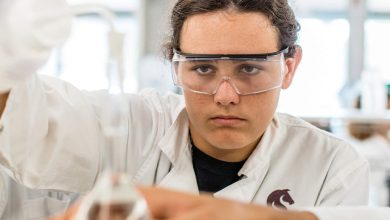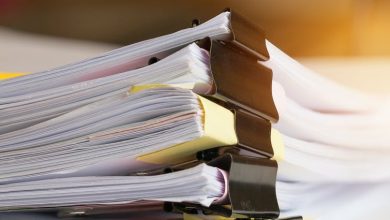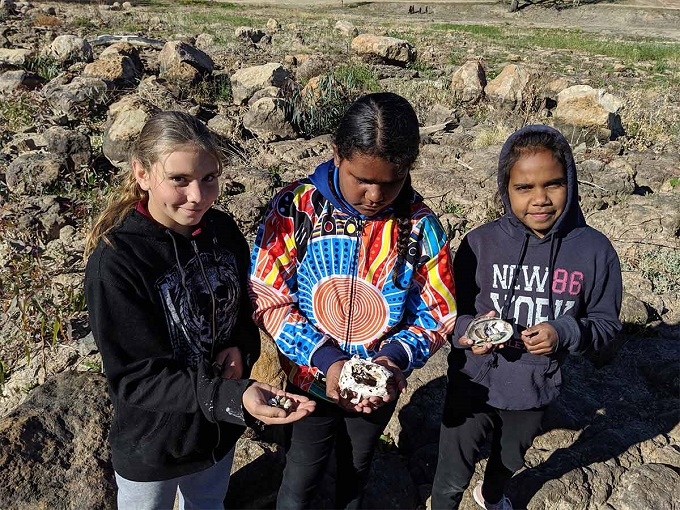Is a plastic-free classroom even possible?
Since its beginnings in 2011, Plastic Free July has become a global initiative that asks us to work towards a world free of plastic waste. How feasible is this in the classroom?

Plastic Free July originated after founder Rebecca Prince-Ruiz encouraged her own family to go plastic-free for a single month. Concerned about the amount of plastic going into landfill, the West Australian never intended to start a global movement, but a decade on, Plastic Free July has evolved from a handful of volunteers into millions of participants across 150 countries every year.
Read the latest print edition of School News HERE
Becoming plastic-free is now a goal of many industries and businesses, from removing single-use plastic bags in supermarkets to replacing plastic straws with paper. It’s apparent on the supermarket shelves with the increasing space being given to bamboo plates, cutlery and other sustainable fibres as well as the massive uptake of reusable coffee cups and water bottles.
“The significance of preventing waste before it enters our ecosystem cannot be stressed enough” said Prince-Ruiz. “We know that the everyday items that pollute our oceans have often only been used once or twice before being thrown in the bin. By taking steps to reduce, reuse and refill, we are being part of the solution to eliminate waste.”
The Plastic-Free School
It’s important to note that short of stepping inside a time machine and going back one hundred years, a school can never be entirely plastic-free. It exists in our computers and is wrapped around library books, it’s in our playground equipment and sports balls, even our school uniforms. But the emphasis remains on the reduction of plastic waste, not the use of plastic per se. Not everything produces waste, but the first step is to determine what does.
A bin audit can be conducted over a week. Finish each day by tipping the contents of bins onto a tarp and—using gloves—getting the students to sort the waste into categories. Separate general waste from recyclable materials and food waste from plastics. Determine the percentage of each type and then make an assessment about what type of waste is easiest to reduce.
In schools with a strict no-food-in-the-classroom policy, plastic waste from lunch boxes will be almost non-existent in the classroom bin – but that usually means it’s a major component of canteen or playground rubbish bins. Therefore, the quickest and easiest way to make a positive change is in the school canteen.
“[A] fun and simple activity is holding a plastic free lunch day, where every student tries to bring their own lunch (not wrapped in plastic) or chooses a plastic free option from the canteen. Remember to let everyone know it’s happening and give them lots of notice.” Plastic Free July website.
An achievable goal for a school might be to reduce the use of single-use plastic bottles by making it a school policy for all students to have a reusable water bottle.
Other initiatives might be promoting school and fundraising events as plastic-free or single-use plastic free. All food must be brought or served in plastic-free alternatives; any icecreams sold must be in paper wrappers with wooden sticks; and drinks sold in compostable paper or bamboo cups.
The act of promoting and organising a single plastic-free event is often powerful enough to make the school community understand just how much plastic pervades our everyday lives, and how hard we will need to work to phase it out.
The Plastic-Free Classroom
The average classroom doesn’t require students to use coffee cups or plastic straws or plastic bags or plastic cutlery (Unless it is an art class, in which case those items are probably getting a second life). But there is plastic in our calculators and chairs, our pencil pots and stick pins, all items that last a long time. So just how much plastic waste is created in the average Australian classroom?
It’s a statistic that is difficult to determine.
The Australian Bureau of Statistics reported in 2018-19 that around 2.5 million tonnes of plastic waste was generated in Australia, which was around 3 percent of all waste. Despite what you might predict, that percentage is actually reducing (it was 4 percent in 2016-17).
Only 9 percent of plastic waste is sent for recycling, with a massive 84 percent winding up in landfills. This is a sobering image. Households are the biggest contributors (47 percent), followed by the manufacturing sector.
With the occasional dried-up ballpoint pen or plastic wrapper from a new eraser, classrooms might not rate a mention on the worst offenders list, but considering they contain the future generations of Australia’s households and business leaders and politicians, they are the ideal place to instigate change; if not action, then education.
As plastic production and waste generation increases, it is clear we can’t recycle our way out of the problem and need to “turn off” the plastics tap. Waste avoidance (which starts at the point of consumption not disposal) needs to be a critical part of the solution. Plastic Free July







